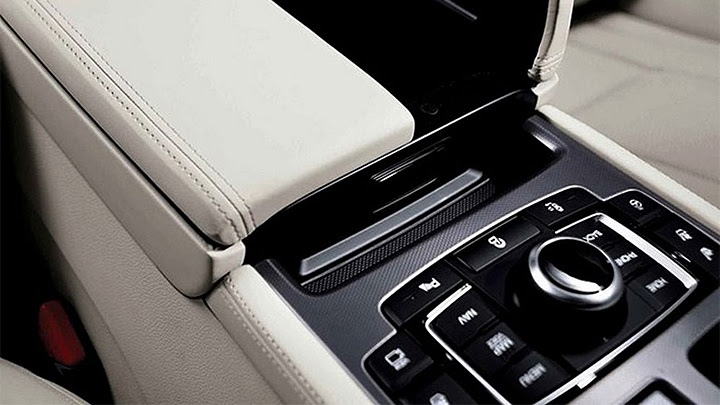
Hyundai didn’t apply its new design rules too flexibly because it took this as an opportunity to create a stronger image for itself around the world. Car after car, now this lineup is seen with the same importance as Chevrolet’s or Volkswagen’s, and spurs similar feelings on the public. However, in the past months there has been a share of the automaker’s creations which went a little far from the Sonata followers: Azera, Santa Fe and Equus debuted their new phases each one with its own separate style. And these, besides Genesis, are precisely all the Hyundais placed above the aforementioned muse in the lineup. Sonata actually inspired only the models which are cheaper than itself.
Given that even its coupé version had a facelift, Genesis needed to change as soon as possible. And now, after so many spy shots and some official teasers, the truth is the sedan did more than change just itself. The automaker used it to reveal what it calls Fluidic Sculpture 2.0. It won’t be a whole new design language, but an evolution of what has been done so far. The intention is to invest on a classier look, rather than sporty. Strong creases, acute angles and bright colors were dropped in favor of smaller shapes and smoother volumes which still don’t forget some of the fluidic shapes which founded the company’s recent great reputation. It’s possible to notice several reminders of other Hyundais, but composing a much more solid look here.







And if you’re thinking this is exactly what most European models do, this could be everything but a coincidence: Genesis will be sold in Europe for the first time. This will be Hyundai’s opportunity of consolidating its name at the luxury market “for real”, because Equus works in a category whose sales are as reduced as its competition is strong. The new sedan is 4.99-m long, 1.89-m wide and 1.48-m tall, with a 3-m-long wheelbase. Such numbers represent an increase compared to the outgoing sedan, and provided extra 10.4 cm and 8.9 cm of front and rear legroom. There are also bigger volumes for small (26.9 L) and big cargo (493 L), but the cabin has much better features to brag about.
The steering wheel could have a German logotype and no one would be surprised. The cabin’s two-tone leather coating is combined to matt chrome accents and a very elegant use of wooden parts: these come in tones which look very similar to the other materials, in order to maintain a discretion which isn’t seen at the Chinese brother Mistra. Like all of its competitors, Genesis brings high-quality materials and a long equipment list, whose main features include independent climate control, heated seats with massage function, LED lights and a cutting-edge parking-assist system, not to mention an infotainment central with two extra high-definition screens for the rear occupants – which need to be only two, judging by the seats’s design.






Besides that, the safety package features warnings for accidental lane departure, presence at blind spots, driver’s fatigue, maintenance intervals and rear cross-traffic, adaptative cruise control, rollover prevention system, lots of airbags and intelligent-driving system. Hyundai needed to be very generous with this sedan’s equipment list because now it’ll compete with names like Audi A6, BMW 5-Series, Maserati Ghibli and Mercedes-Benz E-Class at their homeland, not to mention becoming a tougher rival for the fellow Korean Kia Quoris. This sedan was officially presented at Hyundai’s South Korea headquarters, in an event dedicated to the company’s biggest executives, and will offer four engine options from the beginning.
First there’s a 3.0L V6, whose 257 cv of power and 30.9 kgfm of torque take the car from 0 to 100 kph in about 8s6. The 3.3L V6, in turn, produces 282 cv and 35.4 kgfm and passes that test in 7s2. Take the 3.8L V6 and you get 315 cv, 40.5 kgfm and a time of 6s5. Finally, choosing the 5.0L V8 will result on 425 cv, 52.9 kgfm and the capability of reaching 100 kph in 5s4. The top speeds, however, go from 230 kph to only 240 kph, which leads to think the faster engines have electronic limits. All the options bring an eight-speed automatic transmission as standard just like rear-wheel-drive, but the latter can be upgraded to the HTRAC all-wheel-drive system.